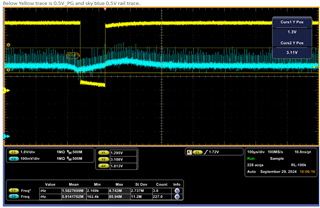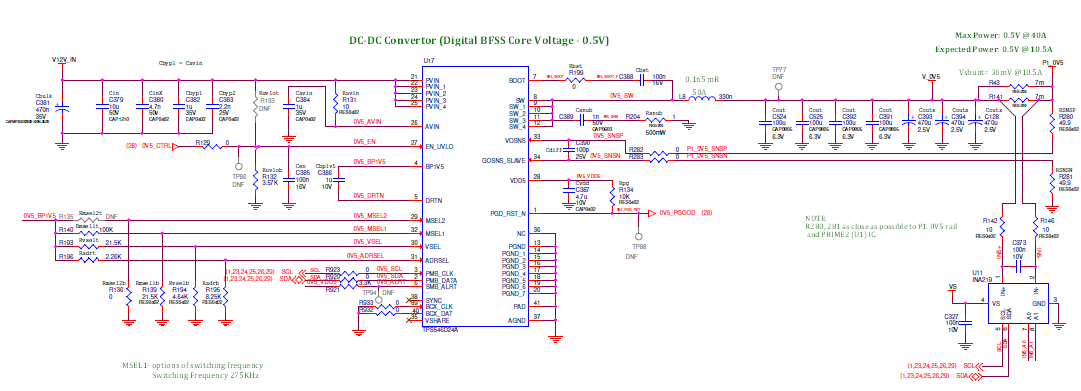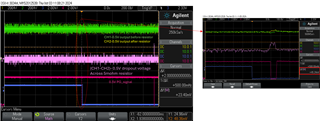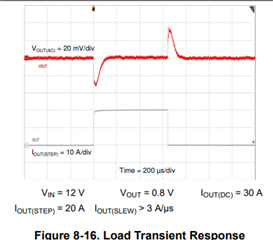Tool/software:
Hi,
We used the TPS546D24A in our board to convert from 12V to 0.5V, and it was working fine. Then suddenly, the PG signal restarted every 900ms and probed the output voltage, which looked like a small drop (see the image below).
We relaxed under the voltage warning limit from 0.45V to 0.44V, and the PG signal is working fine, consistently high. Is there any limitation that will not provide a low current? Our load is ASIC, and the current is 500mA to 1A at this testing.





